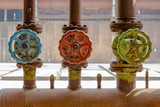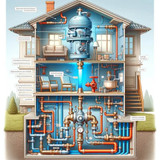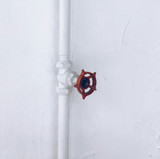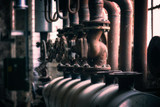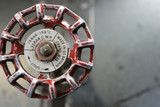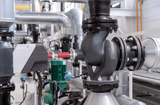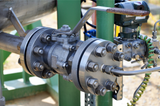What is a Ball Valve?
What are ball valves? Ball valves are valves that permit or halt the flow of media through a pipeline. A typical ball valve includes an inlet, an outlet, and a housing for the valve itself, which is a spherical shape and hollow.
An external control mechanism is attached to a stem--which fits snuggly into a slot at the top of the ball--rotates the ball to an open or closed position. When the valve is "open," the hollow bore will be in line with the pipe, allowing material to pass through.
Conversely, when the valve is "closed," the hollow bore positions itself perpendicular to the pipe, thus stopping the flow of media. A handle, lever, or wheel turns the stem (on manually operated valves). It's worth noting that the bore diameter may have a significant impact on the potential rate of flow.
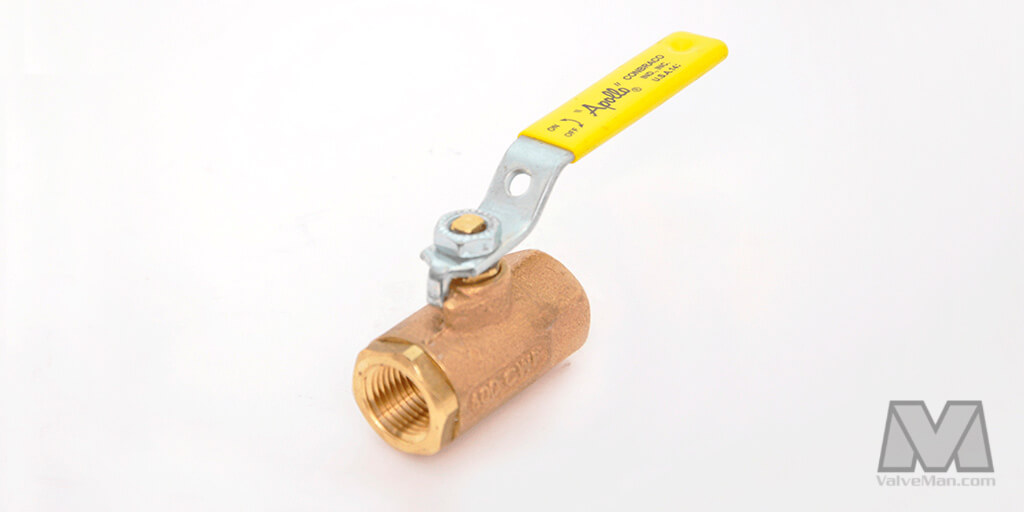
Common Applications of Ball Valves
Ball valves can be used in thousands of applications and are commonly employed throughout the industrial world. Ball valves come in a wide variety of designs: full port (which utilizes an oversized ball for unrestricted flow), a "v" port ball valve for flow control (the ball is actually a "v" shape), a trunnion ball valve, which may have additional mechanical anchoring--for high-velocity flow--and a standard port ball valve, which is usually a size smaller than the pipe, for a mildly restricted flow.
A ball valve frequently used in the food industry is known as a cavity-filled ball valve. A cavity filler incorporates extendable seals to fill the cavity around the ball, therefore limiting potential bacteria growth. Body styles include single-piece, split body (two-piece), three-piece body, top entry, and welded body.
Ball Valve Construction
Design elements may include, but are not limited to, any of these materials: stainless steel, brass, bronze, chrome, titanium, PVC, PFA-lined, etc. Some ball valves are flanged, and the pieces are bolted together.
Many of the smaller, lower flow capacity ball valves (reduced port) are dispensable and inexpensive. These replaceable types of ball valves are often called "throw-away valves." Ball valves made in America (and meeting ANSI qualifications) are of the highest quality.
Three-piece, top entry, and some other ball valves, typically for industrial applications, are made to last as long as possible and are often repairable when they fail in the field. Conforming to today's laws in America, most valves and valve fittings are available "lead-free."
Some of the different ball valve types include split-body ball valves, vented ball valves, and metal-seated ball valves.
Other Uses for Ball Valves
Ball valves may also include 2, 3, and multiple ports. Multi-port ball valves often utilize electric or pneumatic actuators, and some are so sophisticated they can even regulate flow besides just diverting, stopping, or allowing flow. Nevertheless, ball valves are most typically used in "shut-off" applications.
Ball Valve FAQs
Can you leave a ball valve partially open?
While you can technically leave a ball valve partially open for extended periods of time, it can have negative effects on the valve overall. For instance, a high-pressure drop across the ball may lead to a damaged soft valve seat.
While you may use a valve with a ball for moderate throttling, these types of valves are best suited for basic functions like starting and stopping flow. If you know how a ball valve works, you can use it efficiently for a wide range of functions by placing the ball valve handle in the appropriate position (only giving it a quarter turn, for example).
However, the fact remains that it's unwise to leave this type of pivoting ball valve partially oven for an extended period. They serve best as a type of gate valve where you need to control when the flow starts and stops.
Can you overtighten a ball valve?
Yes, in some cases, it is entirely possible to overtighten a ball valve. Doing so will lead to an increase in wear and tear and reduce the lifespan of your valve. The solution to this is, if tightening is required, to do it incrementally and not beyond what is absolutely necessary.
How do floating ball valves and trunnion ball valves differ?
In a floating ball valve, the rotary ball is movable, while in trunnion ball valves, both the upper and lower stems are fixed. Floating ball valves are generally best for use in low or medium-pressure applications. Trunnion ball valves work best for high-pressure applications.
The floating ball design is generally significantly less expensive than the trunnion valves.
How do one-, two-, and three-piece ball valves differ?
Floating ball valves, as with other ball valves, come in several different formats. In one-piece ball valves, the valve body consists of only one portion. In two-piece ball valves, two different portions thread together to create the valve body. Three-piece ball valves, as the name suggests, consist of three different parts.
What are the cons of ball valves?
Ball valves can be an incredibly useful addition to many different types of systems. However, that doesn't mean that they're without their disadvantages. Some of these include the following:
- If you use a valve with a ball for slurries, it's liable to get stuck in the open position.
- Thick liquids may solidify within the valve body, increasing the operating torque required.
- Most ball valves have limited flow control (meaning it doesn't make an optimal control valve).
Shop Ball Valves
If you want to know more about ball valves or would like to spec or purchase ball valves, regardless of your application needs, contact us--we know all about valves. The team at the ValveMan valve store are experts. We have been in the valve business for over 50 years, and we pride ourselves on carrying the finest industrial-grade valves and valve-related products available on the market today.
Shop our online store for new products and examples of the valve industry's latest innovative technology. Unlike some of our competitors, we only sell valves, period. It's simply what we do, and we do it better than anyone else.
From PVC ball valves to those with electric actuators, you can get your new ball valves right here at ValveMan
Ball Valves - Related Articles
Gas Ball Valves In Industrial Applications - 5 Things to Keep in Mind
How To Correctly Use A 3 Way Valve In Different Applications
Industrial Ball Valves - 9 Questions To Make The Right Choice
Using an Actuated Ball Valve Or a Solenoid Valve For Best Fluid Control In The System
Why Choose a Namur Solenoid Valve for a Pneumatic Actuator
Difference Between a Vented Ball Valve and a Standard Ball Valve
Difference Between a 1, 2, and 3 Piece Valve
What is the Difference Between Full Port and Standard Porting?
Our Posts
View AllGate Valve vs Ball Valve Comparison Guide | ValveMan
Valves are widely used in industrial and manufacturing facilities, but they’re also used in ut …
Read MoreValve Inspection - Main Points of Valve Inspection and Testing in Manufacturing Settings
Industrial facilities rely on different types of valves (such as gate valves, check valves and ball …
Read MoreCan Ball Valves Be Used For Flow Control?
Ball valves are widely used in plumbing and piping systems, in fact, they are one of the most common …
Read MoreIntroducing Bonomi Valves
The Bonomi Group is a leader in industrial sectors including oil and gas, hydraulics, heating and en …
Read MoreUnderstanding Valve Actuators: Manual, Electric, Pneumatic and Hydraulic
Are you a beginner new to the valve world, ready to learn more about the various types of valve actu …
Read More3 Check Valve Mistakes to Avoid
So, you’re looking for a check valve, but you’re not sure if there’s any pitfalls …
Read MoreTypes of Valves in Plumbing
Have you ever wondered what goes into managing the flow of water in your home, or through a building …
Read MoreIntroducing Apollo Valves
Apollo Valves® inventory includes a wide range of valve products supplied to diverse markets. Th …
Read MoreUnderstanding Valve Sizes and Measurement
Sizing the appropriate valve is critical to ensuring the performance of your system. Whether you'r …
Read MoreTypes of Water Valves
Hey there, fellow valve enthusiasts! We all know that valves play a crucial role in regulating th …
Read MoreWhat is a Backflow Preventer, and How Does it Work?
When a simple check valve is inadequate for the job, you need a backflow preventer. But knowing …
Read MoreTypes of Ball Valves
Ball valves are important components in a vast range of systems, from small family-owned workshops …
Read MoreUnderstanding valve standards and specifications
Hey there, fellow valve enthusiasts! Today, we're looking at valve codes, standards and specifica …
Read MoreHow to Tell if a Valve is On or Off
We have all been there before. You are staring at a valve; you know that you should know if it …
Read MoreUnderstanding Different Types of Valve Connections and Fittings
Hey there, fellow valve enthusiasts! We know valves play a crucial role in regulating the flow of li …
Read MoreTypes of Valve Handles: Lever and Handwheels
Whether you're involved in industrial work, plumbing, or you're a DIY enthusiast, you come ac …
Read MoreThe Basic Parts of a Valve
Valves quietly work in many different areas, even places you wouldn't expect. They're truly every …
Read MoreGas Ball Valves In Industrial Applications - 5 Things to Keep in Mind
Unlike the standard ball valves, most gas ball valves are tested and approved by CSA. These valves a …
Read MoreHow To Correctly Use A 3 Way Valve In Different Applications
To understand the "T"-port and an "L"-port 3-way valves and what makes them different, it's importan …
Read MoreIndustrial Ball Valves - 9 Questions To Make The Right Choice
Ball valves are versatile flow control devices suitable for extensive industrial applications. They …
Read More